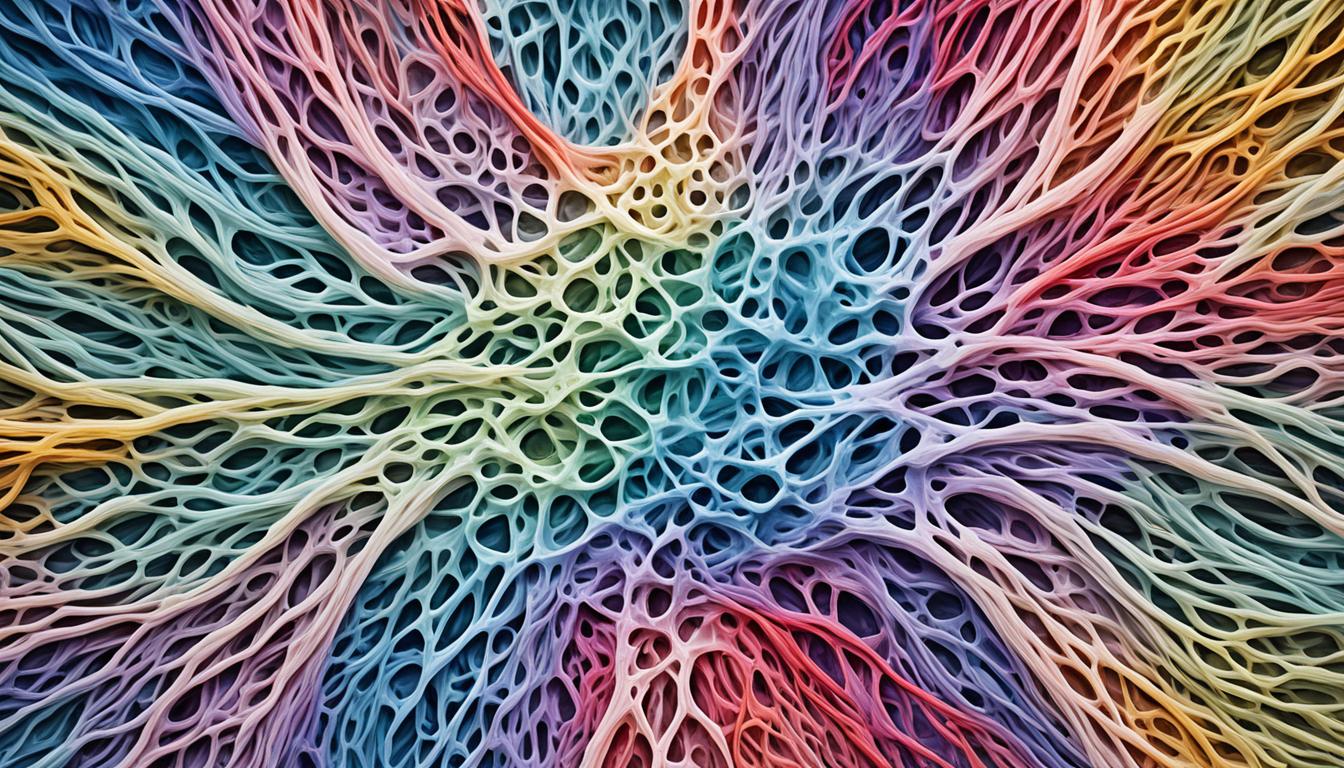Mixed Connective Tissue Disease (MCTD) mainly affects young and middle-aged women. It combines symptoms from different connective tissue disorders. These include lupus, scleroderma, and polymyositis. The illness can sometimes look like other autoimmune diseases. Because of this, it’s not always easy to diagnose. We don’t know exactly what causes MCTD, but experts think both genes and the environment play a role.
Treating MCTD often involves using medicines to control the symptoms. Lifestyle changes can also help. Recently, stem cell therapy has become an interesting new option for managing MCTD.
Key Takeaways:
- Mixed Connective Tissue Disease (MCTD) primarily affects women.
- This disease shows symptoms similar to various connective tissue disorders.
- We still don’t know the exact cause of MCTD, but genes and the environment are likely factors.
- Diagnosing MCTD is tricky because its symptoms are like those of other autoimmune diseases.
- Treatments for MCTD include using drugs and making lifestyle changes.
- Stem cell therapy is promising for MCTD and is under continuous study.
Symptoms of Mixed Connective Tissue Disease
Mixed Connective Tissue Disease (MCTD) has many symptoms. They change from person to person. Knowing these symptoms is key to getting the right help. Some common signs include:
- Fatigue: Feeling very tired all the time, making daily life hard.
- Raynaud’s Syndrome: Fingers or toes getting cold, turning white or blue, and feeling numb.
- Swollen Fingers or Hands: Hands and fingers getting puffy and sore, making it hard to move them.
- Joint Pain: Feeling pain and stiffness in the joints, like with rheumatoid arthritis, slowing down daily activities.
- Rash on the Knuckles: Seeing a red or purple rash on the knuckles, usually an early sign of MCTD.
People with MCTD might also have chest pain, a stomach ache, or trouble breathing. Some might notice their skin getting harder or tighter. Swelling in the hands is also possible. If you’ve had lupus or another similar disorder, see a doctor regularly to keep these symptoms in check.
Knowing about MCTD symptoms and getting early help can improve how well you manage the condition.
Causes and Diagnosis of Mixed Connective Tissue Disease
Mixed Connective Tissue Disease (MCTD) is an autoimmune disorder. This means the immune system harms healthy cells. It targets the body’s connective tissues, causing MCTD’s symptoms. Though its exact cause is unknown, genetics and environmental factors seem to play a part.
Families with a history of MCTD might face a higher risk. This hints at a possible genetic link. Yet, the specific genes and their influence remain a mystery, making the disease’s origins complex.
Diagnosing MCTD is tricky because its symptoms mimic other diseases like lupus. Doctors use a mix of exams and tests to distinguish MCTD. This helps them give the right diagnosis.
Diagnostic Tests for Mixed Connective Tissue Disease
To confirm MCTD, several tests are used. Here’s an overview:
- Antibody Tests: Blood tests look for MCTD-linked antibodies, like U1 ribonucleoprotein (RNP). Detecting these, plus matching symptoms, points towards MCTD.
- Complete Blood Count (CBC): This examines key blood components, showing if there are irregularities.
- Antinuclear Antibody (ANA) Test: It looks for autoantibodies that target cell nuclei. A positive ANA suggests MCTD or other autoimmune disorders.
- Erythrocyte Sedimentation Rate (ESR) Test: ESR rates how fast red blood cells settle, signaling body inflammation when elevated.
Imaging tests like X-rays and ultrasounds check organ health. In some scenarios, a biopsy offers a detailed look at affected tissues.
For a solid MCTD diagnosis, doctors consider symptoms, medical past, and varied tests. Consulting a specialist in autoimmune diseases is crucial for an accurate diagnosis.
Stem Cell Therapy for Mixed Connective Tissue Disease
Stem cell therapy is a new way to help with autoimmune disorders like MCTD. MCTD brings together different connective tissue problems, making it tricky for those affected. But, thanks to new findings in stem cell research, there’s fresh hope.
MSCs+ stem cells are key because they help balance the immune system. They can lower inflammation and boost the growth of new tissues. In treating MCTD, these special stem cells are paired with factors that help specific tissues grow.
Stem cell therapy works by fixing immune system problems and healing the body. Although it doesn’t cure MCTD, it can make a big difference in how patients live. Ongoing studies are looking at how well this type of treatment works for MCTD and other autoimmune diseases.

